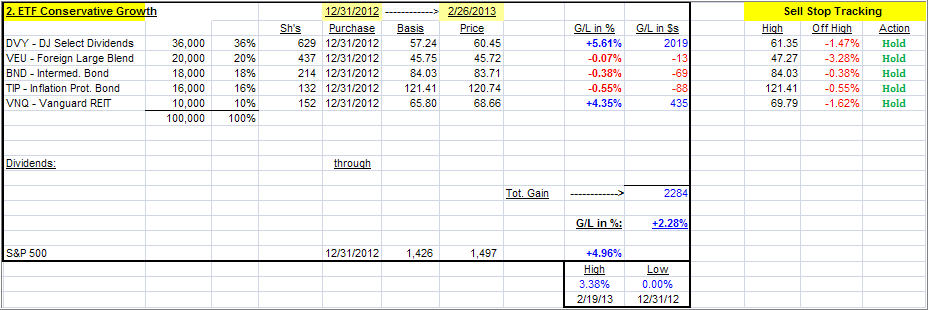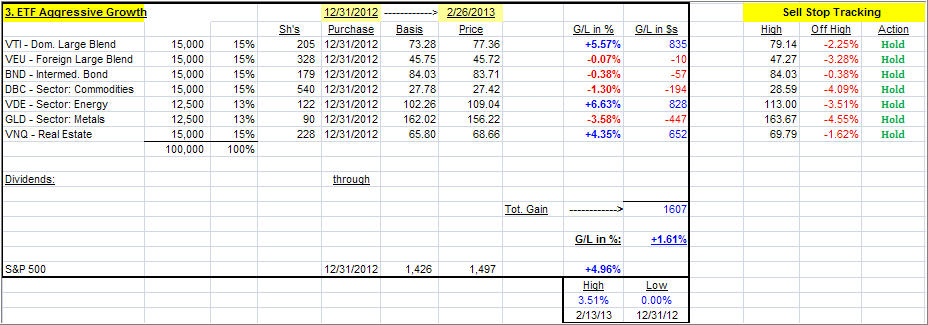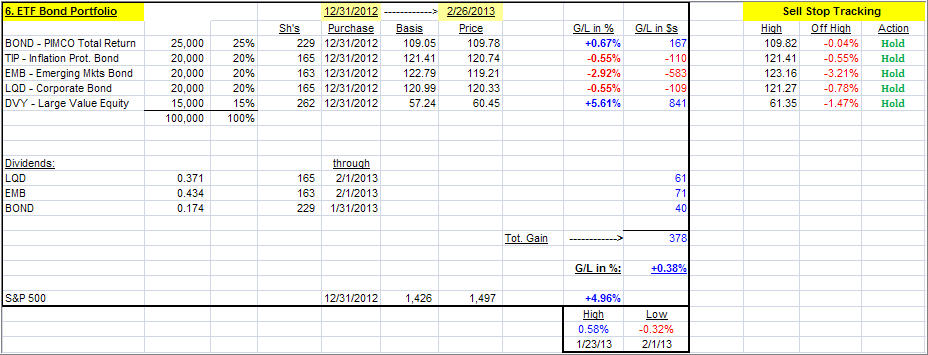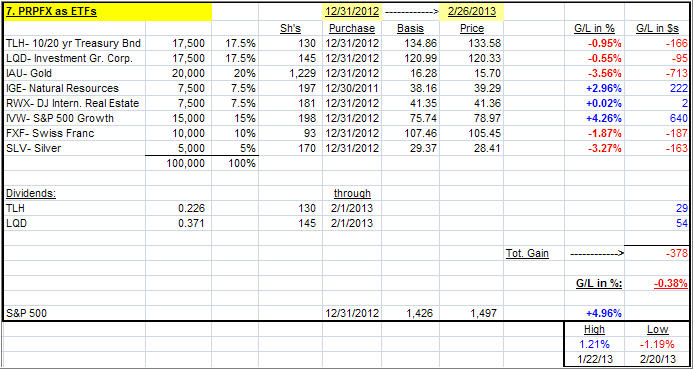The major market indexes took it on the chin last week as a combination of punches thrown by the sequester discussions and unexpected results from the Italian elections were simply too much for the bulls to handle, and the bears had their day in the sun by knocking the S&P 500 down 2.22% since the previous ETF Model Portfolio report.
The markets recovered some yesterday on low volume indicating a possible dead cat bounce. Europe is back in the limelight as politicians watched in horror as Italian voters pounded the unelected technocrat Mario Monti in favor of unknown comedian/blogger Beppe Grillo.
While no clear majority was reached, and prolonged political instability/stalemate may be in the cards, the message was for the anti-establishment group and against EU sponsored austerity. The people have spoken, which is not what the EU central planners had in mind. I’m sure there will be more fallout to come as the so often announced “solved” Europe crisis has suddenly become “unsolved” again.
In the meantime, here’s the latest update for our Model ETF Portfolios:
1. ETF Trend Tracking Model Portfolio
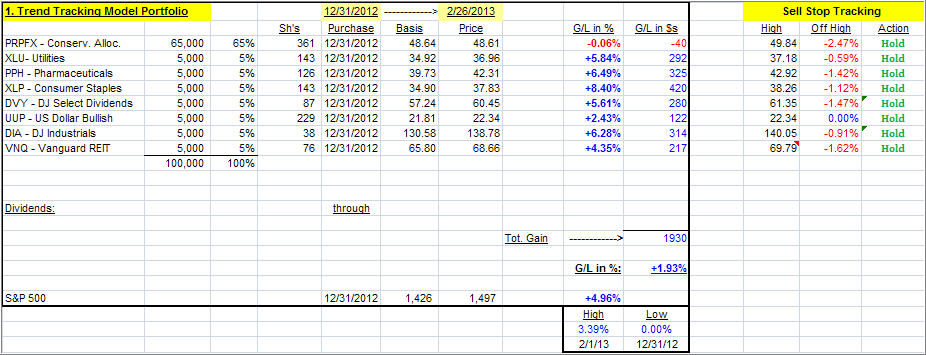 [Click on any table to enlarge]
[Click on any table to enlarge]
This is the portfolio allocation I have used predominantly in my advisor practice during the first half of 2011, although it lagged in 2012.
Around the PRPFX fund, when in buy mode, I add what I call boost components consisting of ETFs that can produce higher returns than my core holding, at least during bullish periods. When a market pullback occurs, the core holding should add an element of stability.
Nevertheless, as you know from my writings, anything I invest in involves the use of trailing sell stops, which are shown and tracked on the upper right of the table.
2. Conservative ETF Growth Portfolio
This portfolio, as are the following ones, would be typical of what is being used in the buy-and-hold community, as you can see by the 40% allocation to various bond ETFs. If you are conservative, this simple combination could work for you, but I still recommend the use of the trailing sell stops during these uncertain times.
3. Aggressive ETF Growth Portfolio
What makes this one aggressive is the small 15% allocation to bonds. If you have an aggressive streak in your personality, you could consider this one. If you use my recommended sell stop discipline, you know exactly ahead of time what your downside risk will be.
4. Moderate ETF Growth Portfolio
I call this one moderate growth, because of the higher allocation to various bond ETFs (27%) than in the aggressive set up above. It is also more diversified domestically.
5. ETF Income Portfolio
This is as simple as it gets, but this model held up well in 2012 and turned out to be the top performer out of the seven I feature. Only two ETFs were stopped out during the past year, and the proceeds were subsequently re-invested as the upward trend emerged again.
6. ETF Bond Portfolio
Many readers have asked for an ETF Bond portfolio, which I have set up in this section; it replaces the old Ivy Portfolio.
With the global slowdown underway, bonds continue to have upside potential until higher interest rates caused by inflationary tendencies will bring this rally to an end. Fed policy is promoting lower rates for another couple of years or so, but market pressures due to unintended consequences could bring this trend to a sudden end, which is why the use of my recommended sell stops is critical.
Even though this is a bond portfolio, I believe some small equity exposure (DVY) is vital should the relentless pumping of equities continue.
7. The ETF Equivalent of PRPFX
As posted recently, I have created and back tested the ETF equivalent of my favorite mutual fund, PRPFX, which is a core holding in my #1 Portfolio. If you missed it, you can read the announcement here.
Take a look at the combination of ETFs:
Since these 8 ETFs represent only one fund, namely PRPFX, we can apply a different exit strategy. For that purpose, I will not track the high points made for each ETF, as with the other 6 models, but measure my 7% drop from the high point this entire portfolio has made.
Alternatively, you can sell this entire portfolio once our domestic TTI has crossed into bear market territory or hold on to only those positions that are maintaining upward momentum. That solves the issue of “what to buy” if you had liquidated 100%.
(ETF trading costs are not included in these portfolios demonstrations. They are intended to show market effects on different scenarios only as an educational tool)
To repeat, the key to selecting a portfolio from the above list is not just performance. Personally, I’d rather lag a little on the upside but have some assurance that I will also lag when the downside comes into play.
I will update these portfolios every Wednesday.
Quick Reference:
Disclosure: I may have personal and/or client holdings in some of the funds/ETFs discussed above
Contact Ulli
